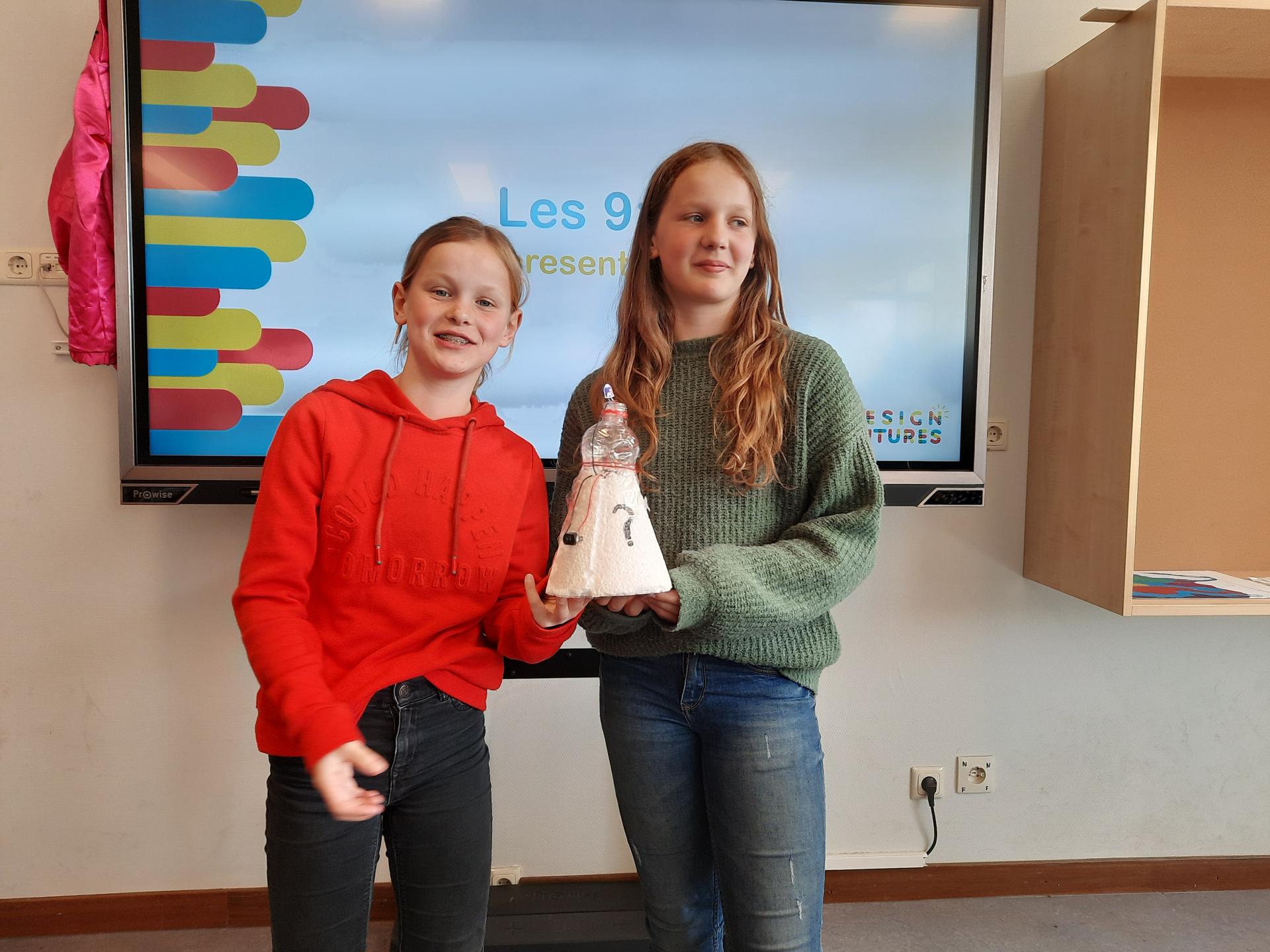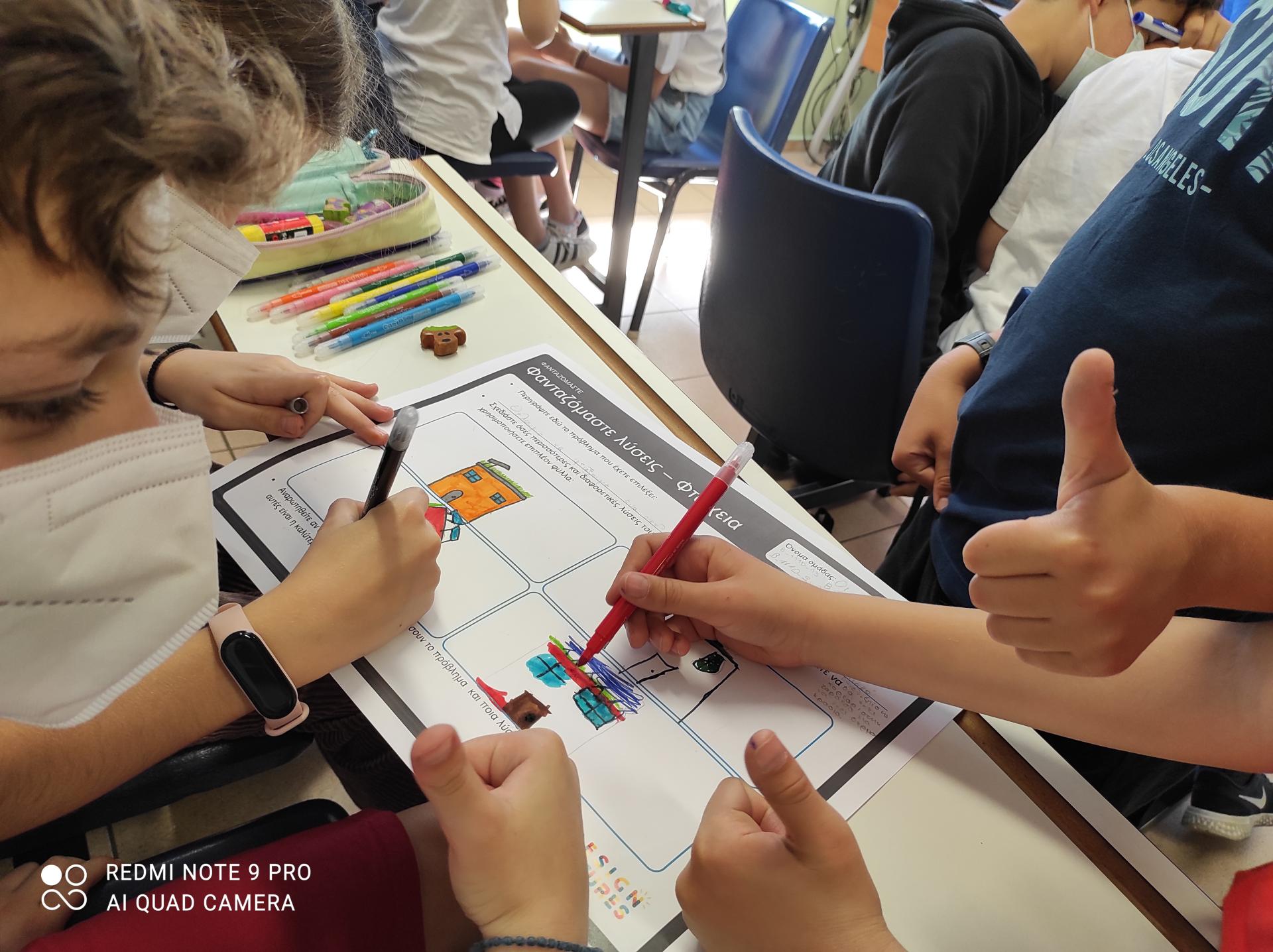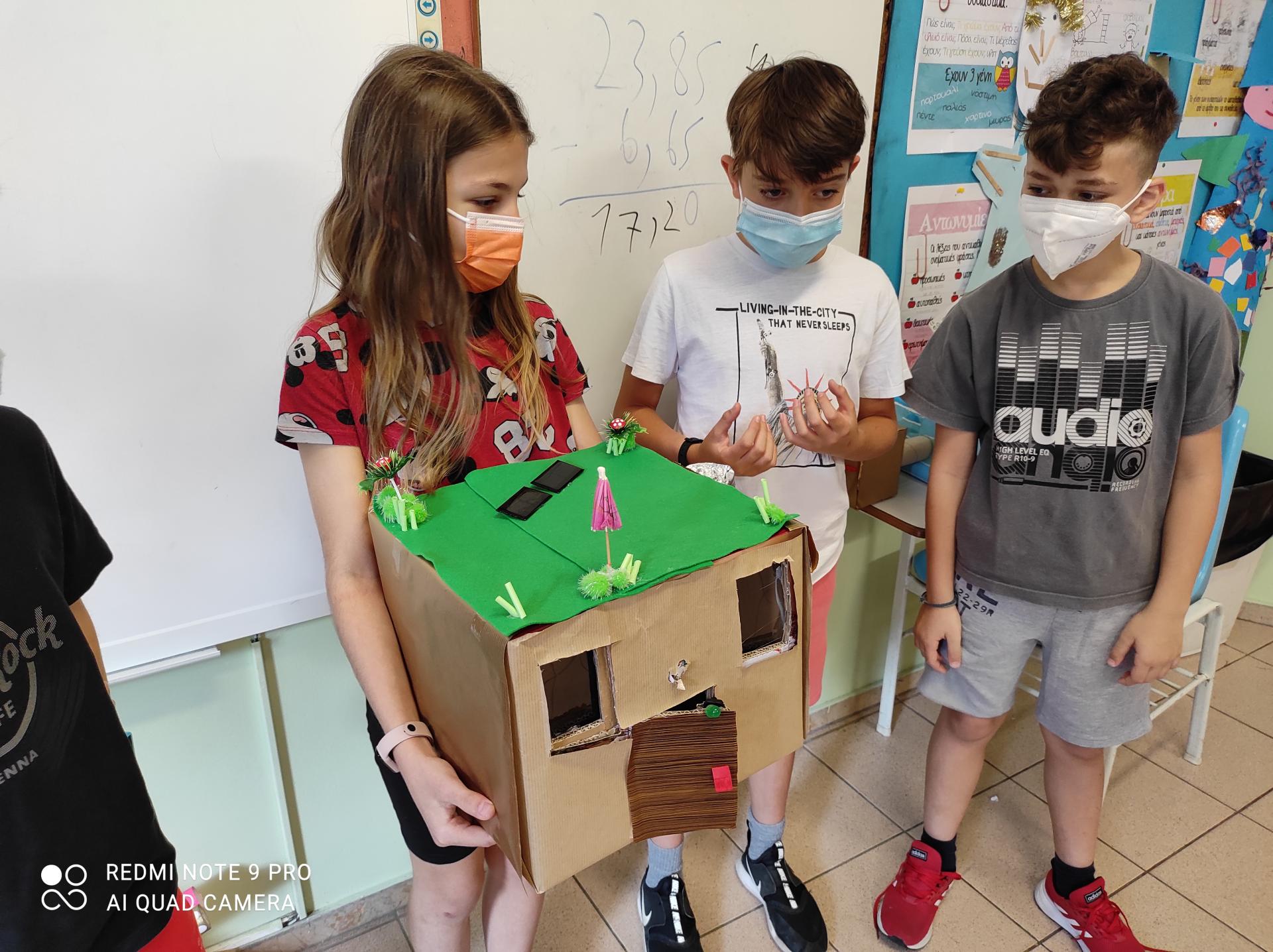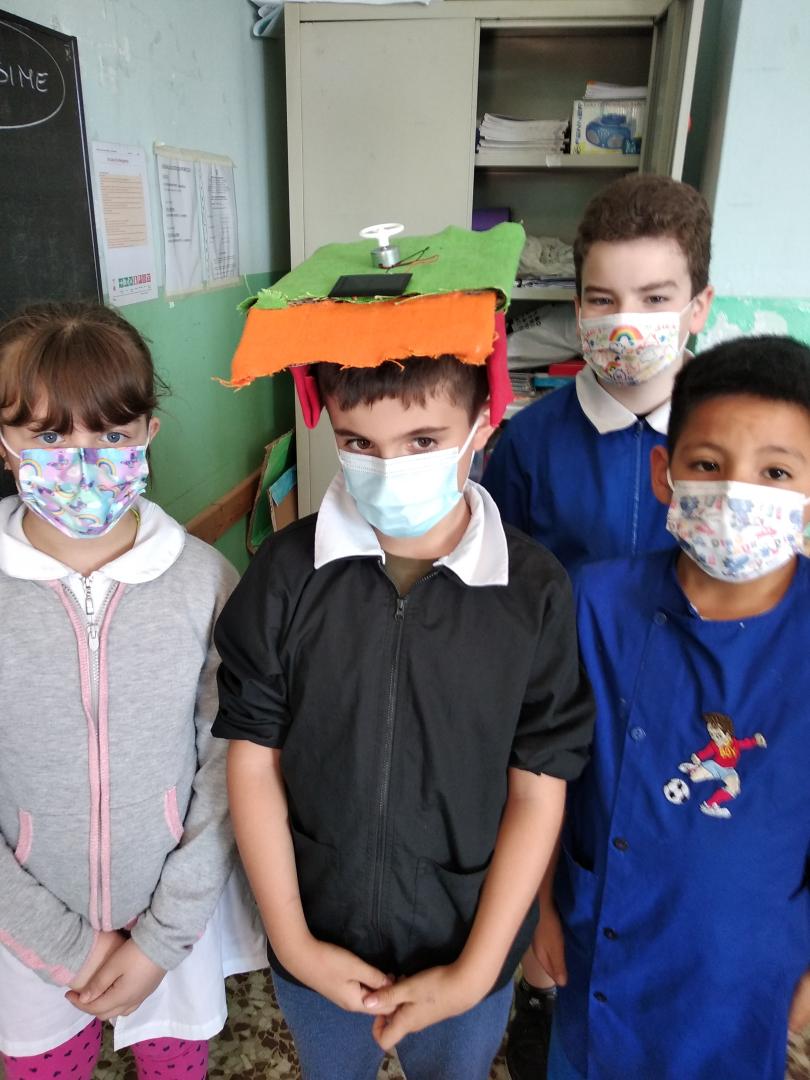DESIGN FUTURES
Basic information
Project Title
Full project title
Category
Project Description
DESIGN FUTURES is a European design-project funded by Erasmus+.
The project aims at offering new sustainable practices embedding Design Thinking and Maker Education pedagogies in school, nurturing an education in beauty, sustainability and inclusiveness.
Through co-designed teaching support material, students and teachers have the opportunity to go beyond debating arguments and knowledge sharing, focusing on generating ideas and prototypes.
All materials are available for free in 5 language
Geographical Scope
Project Region
Urban or rural issues
Physical or other transformations
EU Programme or fund
Which funds
Description of the project
Summary
Design Futures is a European creative and design literacy project dedicated to primary and secondary schools across Europe.
The aim of the project is to nurture an education in beauty, sustainability and inclusiveness, giving students and teachers the tools and methods of design to go beyond debating topics and knowledge sharing, fostering ideas and generating prototypes.
The main value of the project lies in the creation of a sustainable and inclusive future starting by involving children and students: they are offered tools to develop future-oriented concepts and they are guided to imagine solutions that have a positive impact on people and the planet. By using teaching support materials, presented and provided during a training course over several meetings, teachers implemented Design Thinking and Maker Education methodologies in their classes, choosing from different thematic curricula on sustainable futures. Among these, “Clean Energy” and “Poverty in the city” were the ones implemented by the community, which initially involved 20 schools located in 4 European countries (Italy, Greece, Romania, The Netherlands), resulting in the participation of hundreds of children with dozens of different projects. Each one of these projects represented the opportunity to face real challenges on a local scale to build an inclusive and sustainable future, generating reflections among students, teachers and families, and then involving teachers in all the schools that joined the project through a series of online events dedicated to the dissemination of the results.
The teaching materials have been translated into 5 languages and are available free of charge at www.designfutures.eu.
Key objectives for sustainability
The project is structured around a series of curricula (courses - units of instruction) designed to address the challenges of achieving a hopeful, beautiful, sustainable and inclusive future, based on the UN Sustainable Development Goals.
The “Affordable and Clean Energy “ curriculum was the first to be developed and the most tested with schools. The curriculum consists of 9 lessons during which students explore problems and solutions, being encouraged to use their creativity, to collaborate with others and think ‘outside the box’.
The 9 lessons follow the Design Futures process composed by 6 phases:
- we LEARN _ Discovering the project challenge and familiarizing with it.
- we RESEARCH _ Researching the challenge from different angles and reframing it.
- we IMAGINE _ Brainstorming possible solutions and choosing the best one.
- we MAKE _ Creating a working prototype to make the idea tangible.
- we EVALUATE _ Testing and reflecting upon the process and the results.
- we PRESENT _ Explaining the results of the entire process to others.
Along the project all students were guided to keep the concept of sustainability and circularity at the center of their work, embedding renewable and sustainable sources of energy in their solutions and promoting their responsible and viable use.
Also, children were challenged to reuse and upcycle materials that were already available in order to build their projects, thus further reinforcing the importance of environmentally responsible behaviors .
Key objectives for aesthetics and quality
The Design Futures method relies on the combined action of Design Thinking and Maker Education.
First, it leverages Design Thinking to allow students to imagine open-minded solutions for a real-world problem and then continues with its realisation, drawing on the core principles of Maker Education.
This approach allows teachers to bring the topics of sustainability to the classroom in a completely different way. Students are not limited only to discussion or theoretical learning of notions about sustainability, but are faced with a process in which they are asked to conduct basic research, then imagine possible solutions, then build and evaluate them, and finally select the one they will present to the class.
The focus is on the quality of the students’s learning experience which, due to the process described above and the high level of involvement, is characterised by high motivation towards knowledge sharing and increased proactivity. The learning experience itself is therefore positive and rewarding.
With the help of trained teachers they discover how to look for desirable and viable solutions instead of simply solving a functional problem.
Key objectives for inclusion
Co-design and participation are at the core of Design Futures.
Students and teachers have an active role in each phase of the project and collaboration and sharing are pillars of the learning experience.
Participation was fundamental also at the project level.
The project involved a consortium composed by 6 organizations in 4 different European countries. During the development phase it involved the community of teachers, as “designers of meaningful learning experiences for the students”, in the definition of curricula and in assembling the courses, according to the Design Thinking and Maker Education methodologies.
In the testing phase it involved 20 schools and hundreds of students in 4 European nations.
At each stage, all aspects that could help foster open participation were examined and solutions were offered: from the soft skills of teachers and facilitators to the hard configuration of physical spaces in the classroom in order to support different learning modes.
Results in relation to category
Design Futures proved to be an inspirational moment in the students’ learning experience.
Its impact is visible in how it increases the awareness towards more sustainable practices and circularity. Also, it promotes the understanding that sustainability is not simply a matter of protecting and preserving the environment, but that it involves the desirability and aesthetics of solutions as well as the promotion of fairness, social inclusion and equal opportunities throughout the process of production and use of such solutions.
The students gained a more concrete understanding of how products and services are created in our societies and grew their awareness of the need to transform the current ecosystem toward a more sustainable future.
The project increased the teachers’ confidence in talking about complex topics such as environmental and societal challenges.Teachers have been equipped with tools and methods to to facilitate a design-oriented learning experience around new production processes and materials, renewable energy sources, nature-based solutions and new collective consumption models. This process helped students to research and analyse these topics, develop sustainable solutions, and implement and test them in class
How Citizens benefit
In a world in which the future is now more unknowable than ever before and the pace of change is accelerating, Design Futures sees in schools an important and valuable part of the civil society to be involved.
Schools are in a unique position to make the difference for their role in educating future citizens and for their open-minded approach to the future.
Schools raise awareness amongst younger generations around the global challenges we face and equip students with the tools and a proactive mindset to practically deal with the complexity of our world. Schools can contribute to include the construction of a better future at the center of the educational process.
For these reasons the curricula have been developed with the support from teachers and are available for researchers, other teachers and whoever dedicate their professional life to such educational goals.
Future implementations of the project are considering how to increase the contributions of families and how to spread Design Futures in other contexts such as Junior labs, Museums, Public Libraries and Civic Centers.
Physical or other transformations
Innovative character
The most innovative aspect of Design Futures is its direct and practical contribution to the development of 21st-century skills, such as critical thinking, problem-solving, interpersonal skills, entrepreneurship, media and information literacy, among others.
Such skills are crucial to growing adults capable of navigating complexity and giving shape to the future.
These contents are usually provided in higher education, while in this case the project targets primary and secondary schools .
Design Futures method also enhances the capacities of school teachers in competence-based education by developing and delivering teaching and learning modules that will enable them to embed the highly innovative pedagogies of Design Thinking and Maker Education in school curricula.
These pedagogies offer an interactive, open-ended, student-driven, multidisciplinary experience that enhances the development of diverse skills, knowledge, and ways of thinking.
Learning transferred to other parties
The main outcomes of the project have been developed with the support of teachers with the goal of creating a set of materials to be disseminated in all European schools.
The set is available in 5 languages on a dedicated website (https://designfutures.eu) and includes:
- A teacher’s manual and video tutorials on Design Thinking and Maker Education at school.
- A student curriculum that offers a variety of activities across different school subjects and disciplines linked to the UN Sustainable Development Goals (2 fully developed in 9 classroom lessons).
- A training course for teachers from different schools in Europe.
- An impact assessment kit based on student and teacher feedback.
Events are planned on a regular base to disseminate the content generated by the project.




